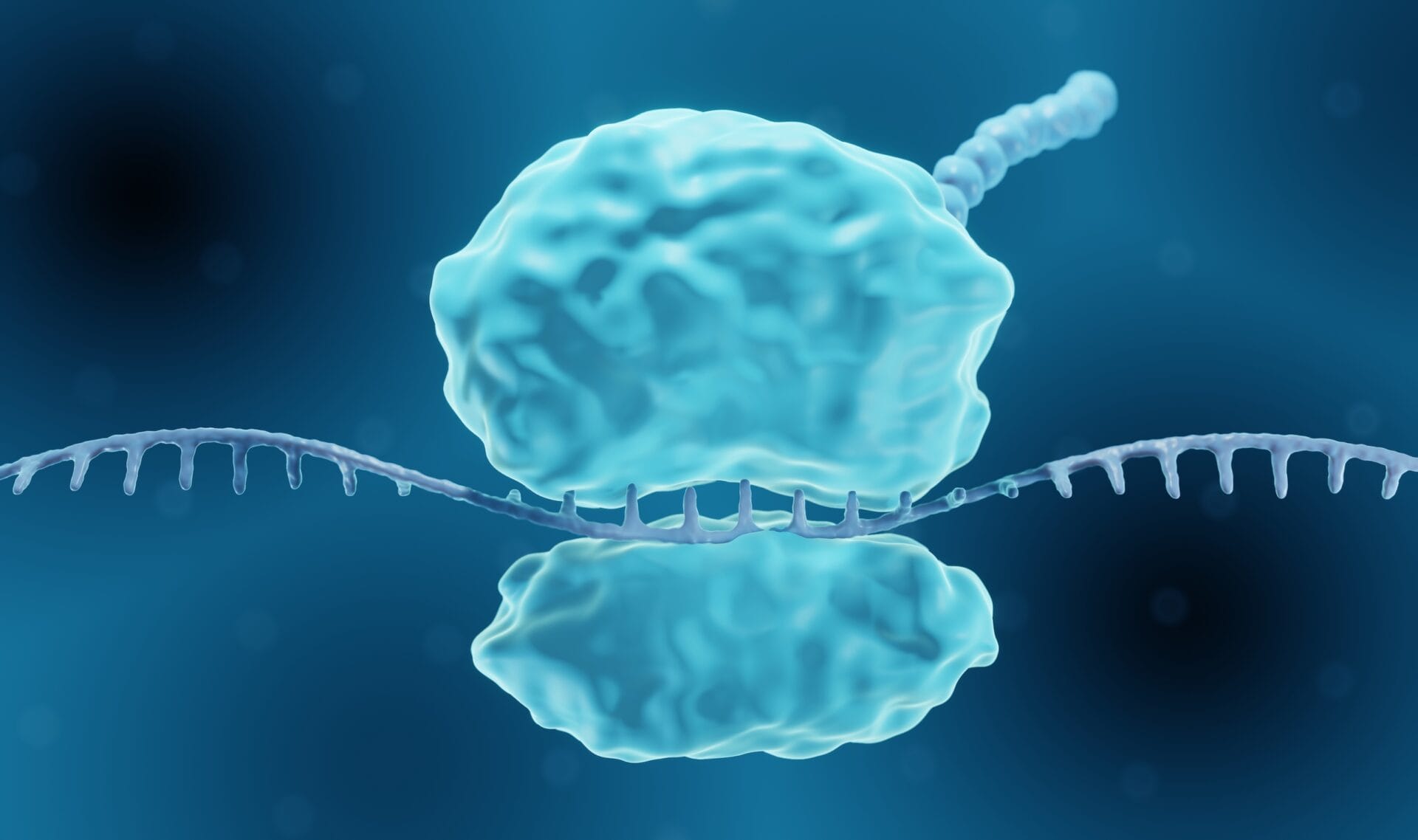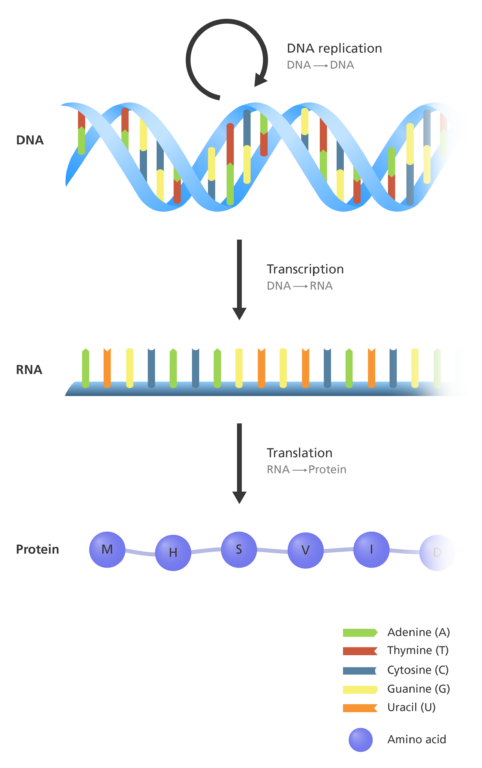How is DNA turned into protein? The Central Dogma of Molecular Biology
Ribosome, 3d illustration of Translation

The ‘Central Dogma of Molecular Biology’ is a model describing the way information stored in our DNA is converted into a functional product, such as a protein. It was first proposed in 1958 by Francis Crick, who co-discovered the structure of DNA.
- Our DNA carries the genetic instructions our cells need to make proteins.
- To make these proteins, cells first copy the specific genetic instruction in their DNA into a messenger molecule called RNA. This is then converted to the final protein product. This process is called gene expression.
- The Central Dogma is the model that describes the ‘flow’ of genetic information – which is usually passed from the DNA code, to the RNA messenger, to the final protein product.
Gene expression
- Gene expression happens in 2 stages, called transcription and translation.
- Transcription takes place inside the nucleus. DNA’s genetic information is copied into small, portable messages, called RNA.
- RNA leaves the nucleus and delivers these messages to the ribosomes – the cell’s protein factories.
- During translation, the ribosomes translate the messages carried in the RNA code into a final product – usually a protein.
The Central Dogma
The Central Dogma states that genetic information flows in specific directions:
- From existing DNA to make new DNA (a process called DNA replication)
- From DNA to make new RNA (transcription)
- From RNA to make new proteins (translation)

Does the ‘Central Dogma’ always apply?
Although the sequence of events described in the Central Dogma is critical for life to function – it’s not the only direction that genetic information can flow in.
- For example, in reverse transcription, genetic information from RNA is used to make new DNA. This often occurs with retroviruses, such as HIV.
- Until recently, scientists thought that RNA was simply the intermediate stage between DNA and the protein. Thanks to research, we’re learning more about ‘non-coding RNAs’, which are copied from DNA but never translated into a protein. These seem to play a major role in the way the cell functions and we’re still learning about this.
- RNA can also ‘turn off’ specific sections of genetic information carried in DNA, in a process known as RNA interference.